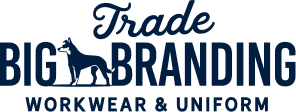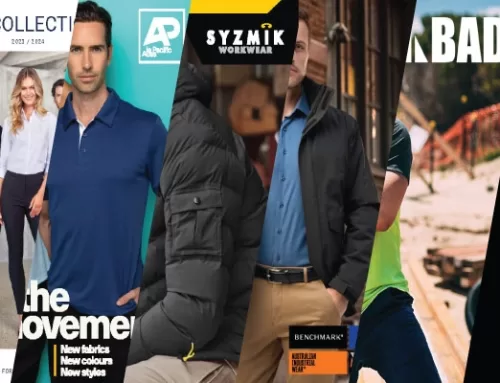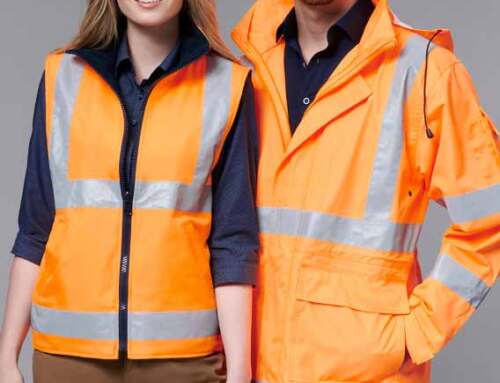Designed to provide the perfect balance between comfort and protection, work pants are a staple uniform piece for many workplace environments. When carrying out potentially hazardous or even just everyday tasks in the workplace, it is essential to know you are dressed in practical clothing that is going to enable you to operate safely and comfortably.
The good news is that work pants come in a range of styles offering a good choice of workwear solutions for different types of work and workplace environments. In addition, variations in sizing, fabrics, and colours provide added customisation and adjustments for more personal preferences like waist sizing and leg lengths.
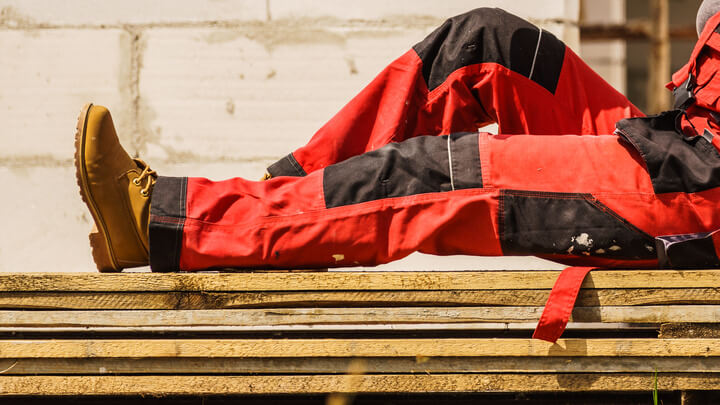
Brief History Of The Trouser
Trousers or long pants are a type of clothing first thought to have been invented by the Chinese and have been a staple item of clothing throughout history ever since. Traditionally these long pants were only worn by adult males and were often made of wool. They were first designed to enable a more practical and comfortable experience when horse riding (mainly when undertaking military engagement).
By the late 14th century, trousers had evolved into a form-fitting shape with attached foot coverings emulating tights and were commonly worn by knights underneath their plate armour. By the 1500s, long pants grew to increasingly voluminous proportions over the thighs, coming in at tighter the ankle. These pants eventually slimmed down into the ‘breeches’ often seen in early European times. Following this, extending back down to ankle length designs, they became a rather practical piece of clothing for the working class.
By the 19th century, we were seeing long pants more like the ones we are used to today, complete with a looser fitting, button fly and a more extensive range of colours. Today, there are many different pants out there, some purely for fashion, some to meet uniform requirements and others designed specifically for various workplace environments.
Types Of Work Pants
Workplace pants or workwear are often designed purely for safety reasons with the view to increasing visibility or providing protection from chemical exposure, heat or cold. Others offer a variety of job-specific features to increase efficiency throughout the working day, such as extra pockets, reinforced knee or seat sections, or specialised fabric choices to improve wearability.
Modern-day workwear pants can be categorised under several broad headings; see below for more information on the different types of trousers and long pants we find amongst today’s workwear and uniforms.
- Hi Vis Pants. Traditionally made of polyester or polycotton fabric with the addition of specialised reflective material to ensure optimal visibility, hi vis pants are a staple in many industries such as railways, roadworks, police, tradies, port workers and factories – pretty much anywhere where increased visibility for safety purposes is required.
- Bio Motion Work Pants. A type of Hi Vis pants, Bio Motion, refers to the specific placement of the reflective stripes on the legs of the pants (or arms if it is an item of clothing for the top half). This reflective tape placement helps identify the body’s individual movements when seen from afar or in conditions with poor visibility.
- PPE. Personal Protective Equipment is required to provide protection in high-risk environments. A range of PPE products cover a wide range of protective clothing, from pants and headwear to overalls and face masks. PPE is generally required in order to comply with PPE regulations for specific industries and environments.
- Cargo Pants. Sometimes called combat trousers, cargo pants are often used in military uniforms but are also a popular fashion choice for both men and women. Cargo pants are a loose-fitting trouser popular for use in work environments and outdoor activities, they are easily distinguishable by their prominent side pockets and are usually made with cotton, synthetic or cotton-synthetic fabric blends.
- Flame Retardant Workwear. Flame retardant workwear must be manufactured from highly specialised materials designed to provide protection against heat and flames. Fabrics are usually treated with specific chemicals or additives in order to give flame retardant and heat resistant properties. Fabrics that melt, such as polyester, acetate and nylon, are not suitable for this purpose.
- Jeans. A popular item of clothing both within the fashion industry and for all kinds of workplaces, jeans provide an easy-care and durable alternative to traditional work pants. Jeans are traditionally made from a woven cotton known as denim, sometimes with a small amount of stretch added for comfort (this is commonly referred to as stretch-denim).
- Reinforced-Knee Work Pants. Featuring dedicated pouches for additional knee padding within the trouser leg. These pants provide extra protection when kneeling for prolonged periods of time and are particularly popular with tradies such as plumbers and electricians.
- Chinos pants are made from a twill fabric made of 100% cotton. Chinos are a more fashionable work pant that provides clean lines and a tidy appearance.
- Work Shorts. Shorts are sometimes necessary for working in warmer areas where long pants may make the wearer too hot or uncomfortable. Work shorts are often modelled after cargo pants and contain multiple pockets for versatility.
- Track Pants. Sometimes referred to as sweat pants, tracksuit pants or trackies, track pants are a casual form of trousers commonly worn for comfort. Track pants are usually made from a cotton or polyester fleece material.
- Waterproof Pants. A necessity for those who routinely work in wet or damp environments, waterproof pants offer much-needed protection against the elements while on the job. Most waterproof work pants will also feature reflective stripes ensuring visibility in poor weather. Waterproofing chemicals and products are added to the existing material, which is then graded according to the degree of its water-resistant properties.
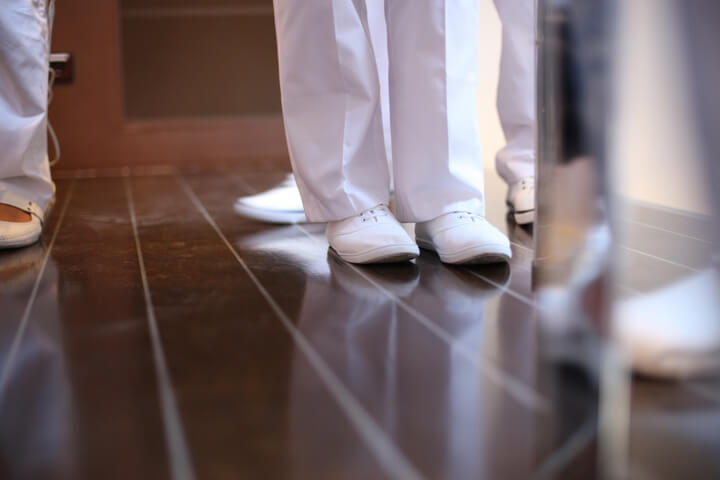
Types Of Fabric Used To Make Long Pants
Work pants are available in a wide variety of different materials. Your choice will depend on the intended application and the environmental and/or hazardous conditions regularly encountered in the workplace.
What is the best fabric for long pants or shorts in your workplace? Work pants are generally made from hardwearing materials designed to last longer under repetitive use. The most common types of fabric used to make protective work pants are:
- Cotton Drill. Made from the natural fibres of cotton plants, cotton drill is woven using a diagonal ’twill weave’, making it stronger, denser, and a heavier weight than regular cotton-based fabric. Therefore it is a popular choice for uniforms and work clothes.
- Polyester. A man-made synthetic fibre with good durability but little breathability and absorption ability. Polyester is often blended with other fabrics to increase their durability.
- Polycotton. One of the most common work trouser materials, polycotton, is a polyester-cotton mix fabric offering increased durability while retaining some breathability. It is a wrinkle resistant and easy care fabric however polyester is not suitable where flame resistance is required as it will melt under high temperatures.
- Canvas. A woven fabric typically made out of cotton or a cotton blend, canvas is an incredibly durable heavy-duty fabric. When creating a canvas blend with cotton and synthetic fibres, canvas can become water-resistant or waterproof making it an excellent choice for hardwearing environments, particularly in outdoor applications. However, its added weight and relative inflexibility can be an issue in some instances. Duck Canvas is a commonly used variant, which is a more tightly woven product that is a lighter, more waterproof version of the original.
- Denim. Denim itself has been around for decades; however, denim as we know it in the form of jeans has only been around since 1873. Denim is a commonly used woven fabric typically made from cotton, sometimes with a small amount of elastic fabric such as spandex added for stretch. Denim is characteristically defined by its two-tone fabric weave, where the front side is traditionally deep blue or black, and the underside, white.
- Stretch Denim. As the name suggests, stretch denim is simply denim fabric with an added elastane component enabling the fabric to stretch and move more freely for the wearer. Elastane is a stretchy synthetic fabric sometimes known as spandex or lycra.
- Ripstop. Often made of nylon, ripstop is synthetic fabric interwoven in a crosshatch pattern using stronger, thicker yarns. This special reinforcing technique makes the fabric more resistant to tears and rips while offering a lightweight, flexible solution well suited to warmer climates.
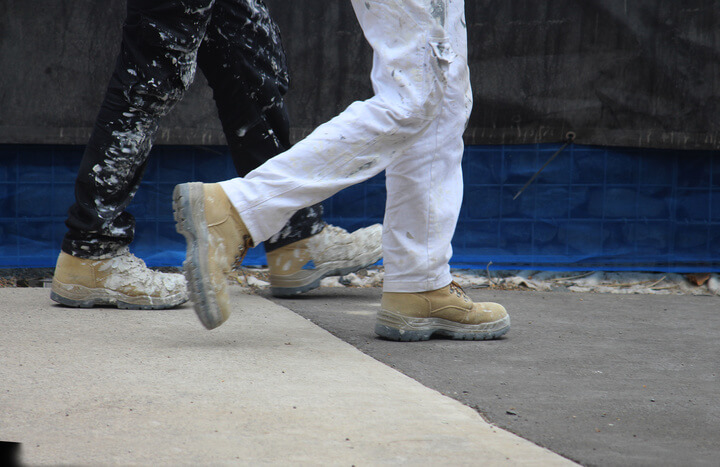
8 Benefits Of Choosing The Right Work Pants
Choosing the right work pants for the job can mean more than just safety and comfort for the workplace. Here are just a few of the benefits of putting some effort into getting it right.
- Increased uniform longevity, less replacement costs
- Better visibility
- Higher productivity
- Improved personal and workplace safety
- Excellent corporate branding opportunities
- Instantly recognisable
- Reduced injury costs
- Reinforced business culture
Interested in adding customised branding to your work pants or workwear? Find out more about the benefits of branded workwear here, or get in touch with the experts in screen printing and embroidery at Big Branding to discuss your requirements today.
